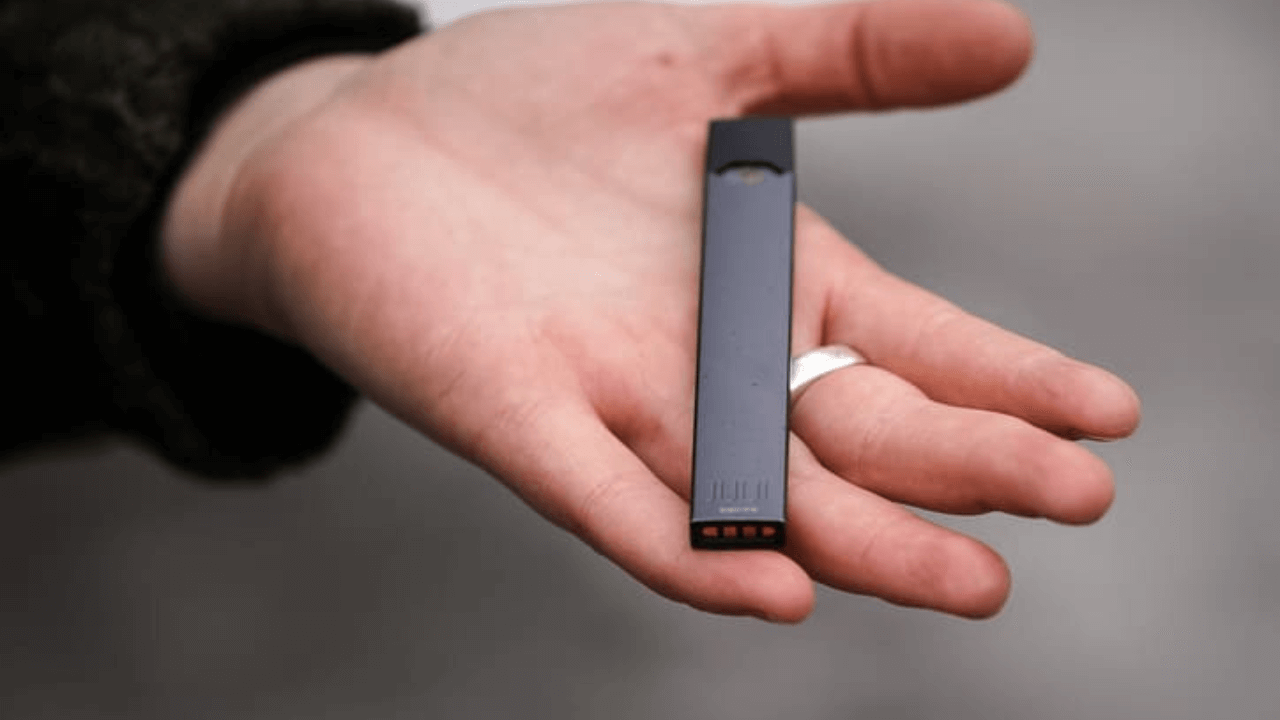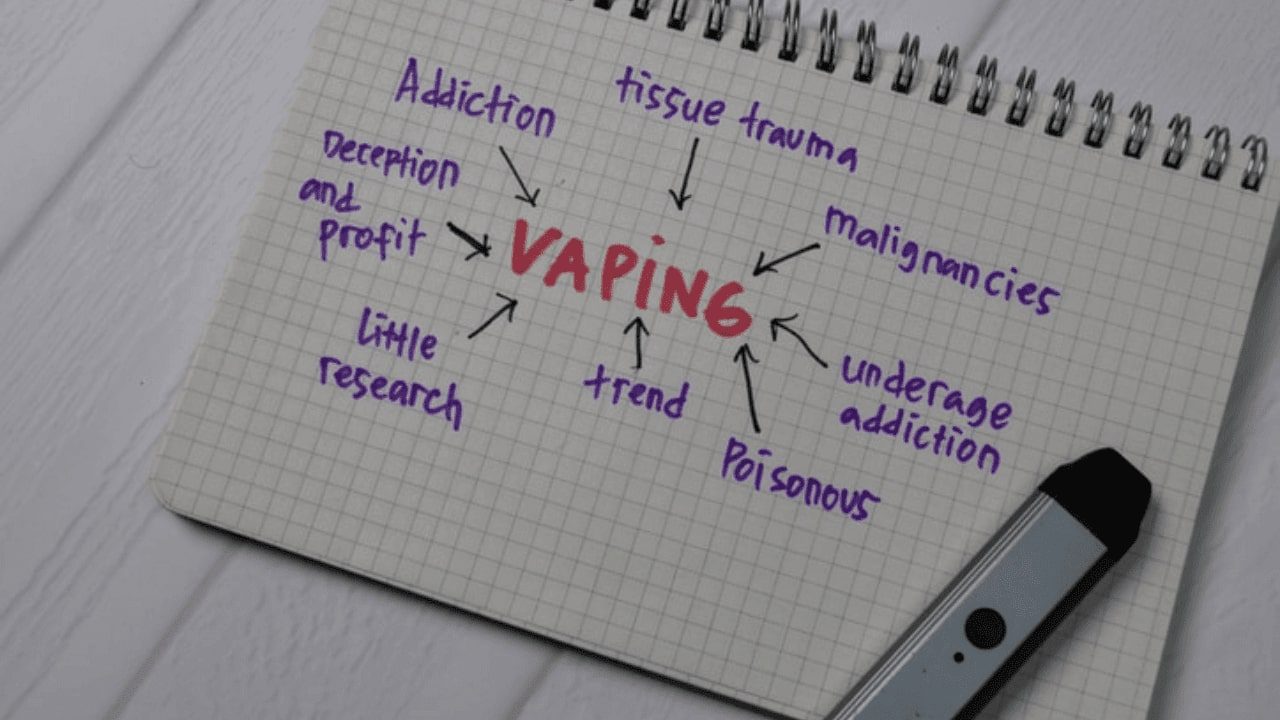Is Vape A Drug?: The Top 8 Answers To Your Questions About Vaping


Vaping is relatively common among both middle and high school students.
According to the National Youth Tobacco Survey, “more than 2 million U.S. middle school and high school e-cigarette users used e-cigarettes in 2021, and almost 85 percent of youths using e-cigarettes used flavored products.”
While “vape” itself is not necessarily a drug, vaping products often contain harmful substances, like nicotine and THC (the active ingredient in marijuana). These substances can have a negative impact on your teenager’s physical health and brain development.
Teens might resort to vaping for a number of reasons, like peer pressure, experimenting, and coping with stress.
Adolescence can be challenging for teens. They are under a lot of pressure to fit in, start romantic relationships, focus on school, and make decisions about their futures. Sometimes, teens use vaping to handle the stress of transitioning to adulthood.
You might have a challenging time knowing if your teen is vaping. Due to the shapes of vaping devices and the odors of e-liquids, teens might prefer vaping to smoking tobacco or marijuana because they can disguise vaping more easily.

Vape pens and electronic cigarettes (or “e-cigarettes”) are the same, though these products come in many different forms.
Vaping devices and e-cigarette products come in many different forms. You might hear different names; however, they all essentially work the same way. Vaping devices vaporize an e-liquid, which contains flavors and additives, along with nicotine, THC, or both.
Some common names for e-cigarette products include:
Vaping devices are electronic nicotine delivery systems, which might also include THC, the active ingredient in marijuana. These products contain a battery, a mouthpiece, a heating element, and a cartridge or pod for the e-liquid.

You can know if your teenager is using e-cigarettes, or vaping, by looking for the following signs:
You might also notice a change in your child’s overall health and wellbeing, especially breathing and lung issues.
New health issues could result from vaping or other problematic behaviors, like alcohol or drug use. Always consult with your healthcare provider when your child experiences any new health symptoms or significant changes in sleep or appetite.
When speaking with your teen about vaping, address your concerns in an open dialogue rather than a lecture or using scare tactics.
Your teen might shut down, get defensive, or deny the issue if you try to control their behavior by lecturing, punishing, or making accusations. By opening up a conversation, you can learn more about why your teen is using vape products.
Teens and young adults vape for various reasons. Understanding why they vape is crucial to helping them quit.

According to National Institute of Drug Abuse (NIDA) Director Dr. Nora Volkow, “the number one reason“ for teen vaping is that “teenagers . . . want to experiment.”
The teen years are a time of experimenting and trying new things. Teens are vulnerable to taking risks without regard for the long-term health consequences. They want to try new things as they create their identities from teens to young adults.
Parents can help prevent their kids from using drugs, alcohol, and tobacco products by finding healthy outlets for their kids.
Your teen is going to want to take risks and try new things no matter what. As a parent, you can guide them to take healthy risks, such as sports, hobbies, art and music, and other activities that introduce them to other like-minded people.
In addition to experimenting, Dr. Volkow identifies other reasons for teenage vaping:
Another reason that many young people vape is an alternative to regular cigarettes.
Teens might be curious about tobacco use and try vaping rather than other tobacco products, like smoking cigarettes or smokeless tobacco. Cigarette smoking can be easily identified compared to vaping, which can be masked by the flavors.
Some teens and young adults use vapes to quit smoking regular cigarettes.
Many young people believe that vaping is a healthy way to get tobacco-free. However, the most beneficial approach to giving up nicotine is to get completely vape and smoke-free due to the health risks of vaping.
Vaping poses many health risks, like marijuana and nicotine addiction, lung injury, and other adverse health effects. Teens who vape are especially at risk for developing these health issues.
Vaping is bad for teens due to the potential long-term health consequences and the negative effects on brain development.
The teenage mind and body are still developing into the mid-20s. Using any addictive substance, like alcohol, nicotine, THC, and other drugs can lead to developing a dependence or addiction. Teens who vape are more likely to develop a substance use disorder later in life.
The CDC outlines several reasons why vaping is harmful to teens and young adults, including:
Vaping puts teens at a greater risk of developing mental health issues like addiction and substance use disorders. If they vape to manage underlying mental health issues, these conditions can worsen without proper mental health treatment.
Vaping, like other products containing nicotine, THC, and tobacco, can also potentially harm your teen’s physical health.

The products contained in vape products can be harmful to your teen’s physical health.
The physical health effects of vaping can affect your child’s developing lungs and oral health. These effects can lead to long-term negative health outcomes, including lung disease, cancer, and dental issues.
Some additives in e-cigarette aerosol might be harmful to a teen’s developing lungs.
The CDC, Food and Drug Administration (FDA), and other state and federal public health agencies are monitoring “e-cigarette, or vaping, product use-associated lung injury (EVALI).”
According to the CDC, an EVALI outbreak was linked to a harmful additive in THC vaping products called vitamin E acetate. While safe when “ingested as a vitamin supplement or applied to the skin . . . when vitamin E acetate is inhaled, it may interfere with normal lung functioning.”
The CDC goes on to recommend that “E-cigarette, or vaping, products (nicotine- or THC-containing) should never be used by youths, young adults, or women who are pregnant.”
The risks of e-cigarettes outweigh any potential benefits as an alternative to smoking or chewing tobacco products. Young people are especially at a greater risk of these health effects due to adolescent brain development.
According to the Journal of Esthetic and Restorative Dentistry, “the effect of e-cigarettes on periodontal tissues is similar to that of conventional cigarettes.”
Like tobacco cigarettes, vaping can cause damage to the teeth and mouth. Your teen might have bad breath and poor dental hygiene caused by a dry mouth. Long-term use of e-cigarettes can cause gum disease, stained teeth, and tooth loss.
The Office of the U.S. Surgeon General states that teens who vape are more likely to smoke regular cigarettes.
While many might believe that vaping is safer than smoking cigarettes, “among high school students and young adults who use two or more tobacco products, a majority use both e-cigarettes and burned tobacco products.”
Vaping, or e-cigarette use, is harmful to both adults and teens. However, teens are significantly more vulnerable to the health risks of e-cigarettes and other tobacco products containing addictive products like nicotine and THC.

Since vaping can be easily disguised, parents might be interested in knowing a way to test for vaping.
Parents can test for vaping and e-cigarette use by testing for the harmful products contained in these products. Since vaping is often used to deliver nicotine or THC, you can test for either of these chemicals.
Blood tests, saliva, urine, and hair follicles can contain evidence of using either nicotine or THC. Parents can purchase many of these products online or at their local drug store.
Parents should talk to their children about their concerns about vaping and help them create a plan to quit before testing.
If you suspect that your teenager is using e-cigarettes, cannabis, tobacco, or other substances, start with a conversation instead of pulling out a drug test for them to use. Always address your concerns with an open dialogue to learn about your teen.
A false accusation can erode trust between you and your teen. If your child is using substances like vapes, you can create a plan to quit, which might include regular testing to monitor their use and hold them accountable for quitting.

If your teenager is vaping, you can take many approaches to stop them from vaping.
Addiction to nicotine or THC from the use of e-cigarettes can make it challenging for your teen to quit without support. The causes of addiction can be complex. One of the first steps is talking to your teen about why they vape in the first place.
Your teen might vape to self-medicate with the stimulating effects of nicotine.
According to MedlinePlus, nicotine can “[b]oost mood, give people a sense of wellbeing, and possibly even relieve minor depression.” In addition, nicotine can “[s]timulate memory and alertness.”
Teens might also use vaping devices to deliver THC to their body and mind.
If your teen uses a vape pen with THC to deal with anxiety or depression, they will need healthy coping skills to deal with these underlying mental health issues. Teens might have begun vaping by experimenting and then leaned on vaping to deal with stress.
If teens don’t develop healthy coping skills for mental health issues, they are more likely to continue vaping or move on to other substances to self-medicate.
You can help your teen quit vaping and other tobacco products by assisting them in creating a plan to stop. By collaborating on a plan, your teen will be more likely to commit to vaping and smoking cessation than if you develop a plan for them.

SmokeFree.gov offers tips that you can consider the following when working with your teen on a plan to quit vaping and e-cigarette use.

Quitting vaping and other tobacco products can be tough for your teen. By empowering your child to create a plan with your support, you can help them avoid the mental and physical health risks of vaping.
Vaping can contain addictive chemicals like THC and nicotine. The use of vaping products can lead to long-term mental and physical health issues in teens. Sandstone Care is here to support teens and young adults with substance use disorders. Call (888) 850-1890.